Instant Face Lifters
In her autobiography, Esther Williams recounts a technique used on the 1946 MGM movie ‘Hoodlum Saint’ that gave William Powell an instant face lift.
One of the first scenes called for me to slap Bill Powell after he kissed me without my consent. Norman had told me I was really supposed to let him have it. By this time Bill was in his mid-fifties, and when you’re just twenty-two, that strikes you as quite ancient, frail even. I didn’t want to slap that “old man” because I was afraid I was going to hurt him. Swimming develops broad shoulders. I never needed shoulder pads in my dresses, because I had my own built right in; and the same powerful armstroke that helped me in the water gave me quite a wallop on dry land. Norman kept telling me that there was no way to fake it – I had to really connect with Bill’s face in order to make that distinctive hollow thwack of palm against cheek.
As the scene began, I had my back to the camera. Bill came up behind me and planted this big kiss. As directed, I put a look of righteous indignation on my face and hauled off and smacked him in the cheek-hard. Then I watched in horror as one side of his face collapsed.
The other side still looked normal. “Oh, my God!” I shrieked. I thought Powell was having a seizure or a stroke.
“Cut! Cut-cut-cut! ” screamed Norman. “Makeup!”
“What do you mean, ‘Makeup’? Norman, get this man a doctor!”
Taurog glared at me the way a veteran shortstop might regard the team’s greenest rookie, which in a way I was. I turned to my costar to apologize. “Oh, Mr. Powell, I’m so sorry. What have I done? I broke your face!”
Bill waved me off with a tolerant but lopsided smile. I tried not to stare at his face-half of him looked thirtysomething; the other half looked like the picture of Dorian Gray. “I’ll be fine in a few minutes, Esther. We can un-break my face.”
The makeup people came right onto the set and began working on him. To my astonishment I saw an intricate network of rubber bands all around his face, all running into a knot at the top of his head. There was one by the eye, another right below the eye, another along the jawline. I had hit him so hard that I’d broken the bands on one side of his face. When the makeup men were finished, it looked as if somebody had pulled all of his face up toward the top of his head. It was an instant face-lift, which is what they did for older actors instead of plastic surgery back then.(Williams, 1999, pp. 126-127)
A detailed description of an apparatus similar to that used by William Powell is provided by Vincent J-R Kehoe (1969).
Facial lifts can be applied to the sagging muscles under the chin instead of just shading them. To make the lifts, cut strips of mousseline de soie with either pinking or straight shears about three to four inches long and one-half to three-quarters of an inch wide. Nextcut a notch [1] about ¾ of an inch down from the top of the strip and fold over. [2] Place a piece of white No. 40 linen thread in the notch and cut so it extends about a foot on each side. Place the lift on a plate of glass and spread Duco Clear Cement over the folded portion. Dry thoroughly; then with a razor blade separate the lift from the glass and trim excess Duco Cement [3].
On one lift tie in a hook [4] and on the other tie knots at intervals to catch the hook on. [5] A strong elastic band can be inserted on the end of the knotted side to provide more resilience if desired [6].
Adhere the lifts to the face just below the sideburn area with RCMA Matte Plastic Sealer and dry. When the sealer is thoroughly dry, pull the two ends of the tape up over the head and secure at the proper tension with the hook and eye arrangement. Too much pull will form a large crease near the ear so be careful to avoid this.
RCMA Color Process Process Foundation can be applied directly over the dried sealer.(Kehoe, 1969, p. 126)
General use
Theatrical apparatus similar to the device described by Kehoe have found their way into general usage. A number of patents were taken out on this type of device and beauty companies have been selling instant face lifters from the 1920s onwards.
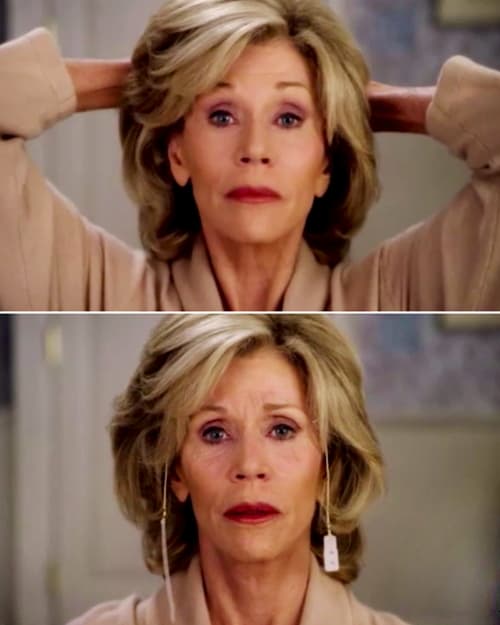
Above: Jane Fonda [b.1937] removing a instant face lifter in the television program ‘Grace and Frankie’ (Skydance Television).
Face lift tapes are still available on the market today that operate in the same way as devices used in the last century. The only essential ingredient needed is enough hair to hide the bands.
First Posted: 25th April 2009
Last Update: 7th June 2020
Sources
Kauffman, M. (Producer). (2015-). Grace and Frankie [Television series]. Los Angeles: Skydance Television.
Kehoe, V. J-R. (1969). The technique of film and television make-up for color and black and white. London: Focal Press.
Williams, E., & Diehl, D. (1999). The million dollar mermaid. New York: Simon & Schuster.
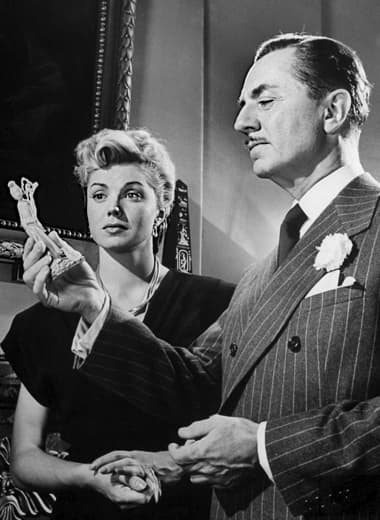
1945 Actor William Powell [1892-1984] appearing with Esther Williams [1921-2013] in scene from the ’Hoodlum Saint’ (LIFE, 1945).

Diagram of mousseline de soie (silk muslin) equipment (Kehoe, 1969).
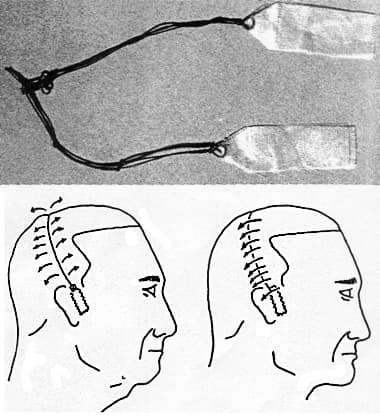
Construction of facial lifts using mousseline de soie (silk muslin) (Kehoe, 1969).
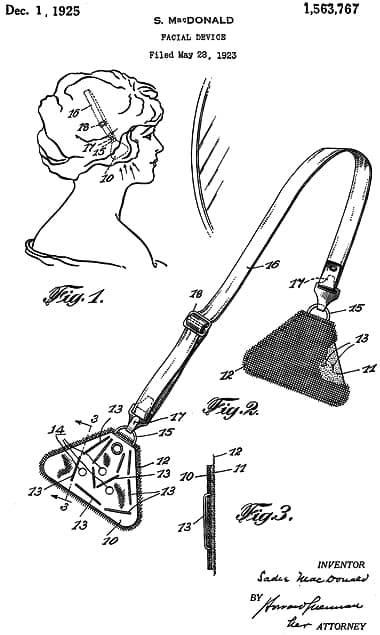
1925 Facial Device (US patent: 1,563,767).
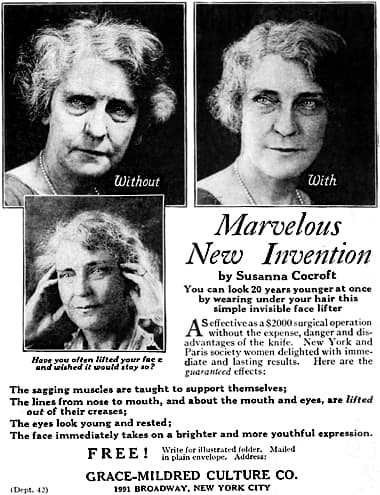
1927 Grace-Mildred Face Lifter.
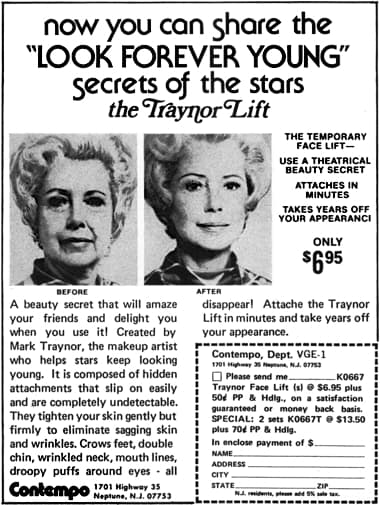
1972 Contempo Traynor Lift.
